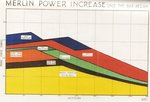Interview with L.Kulakov
If you back up to "articles" you will find other interviews.
The short engine life (50 hours vs 120 hours) before overhaul was largely because of a different oil quality.
The Russians were told to use a cleaner grade to prevent excessive wear, other than that it was not anymore prone to wear than other engines.
There's also something about a throttle/prop linkage that had to be removed to get more out of the aircraft.
You can read more on that site.
They speak highly of the P-40 and more so the P-39, referring to them as "modern" aircraft compared to their I-16s and LaGGs.
Thank you. The article I read said the decreased engine life was due to overboosting and/or overrevving (I can't specifically) but, it was an interview with a pilot and that was probably just his opinion/assumption. Sounds like the actual culprit was poor oil quality.
"At 66", the overboosting produced 1745 hp at SL and 1770 hp at 2000 ft. The engines were also subject to over-revving.
At 70", the overboosting at 3200 rpm produced 1780 hp at 3000 ft.
Allison was worried that the overboosting with the 8.8 blower ratio would produce a 'bad precedent' once engines with a 9.6:1 supercharger ratio entered service. However, the engines with the low alt ratio were "apparently" standing up well to the overboosting. Allison recommended an emergency rating of 60", producing 1570 hp for the engine, for the 8.8:1 engines and 57" for the 9.6:1 engines.
EDIT: Did some more checking and it looks like just a week after the Allison/GM memo, the -39 was re-rate to a maximum of 56" (1470 hp at SL) and the -73 was re-rated to a maximum of 60" (1550 hp at SL). Looks like the engines with the 9.6:1 supercharger ration were limited to a maximum of 57" (1360 hp at SL, 1480 hp at 10,000 ft) at least until April 1944."
If the Allisons were standing up to that level of power, why didn't Allison crank them up like that from the factory?


